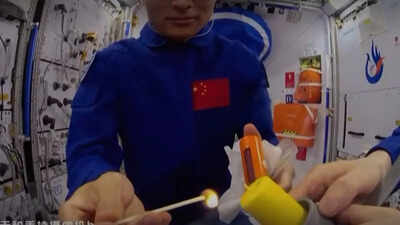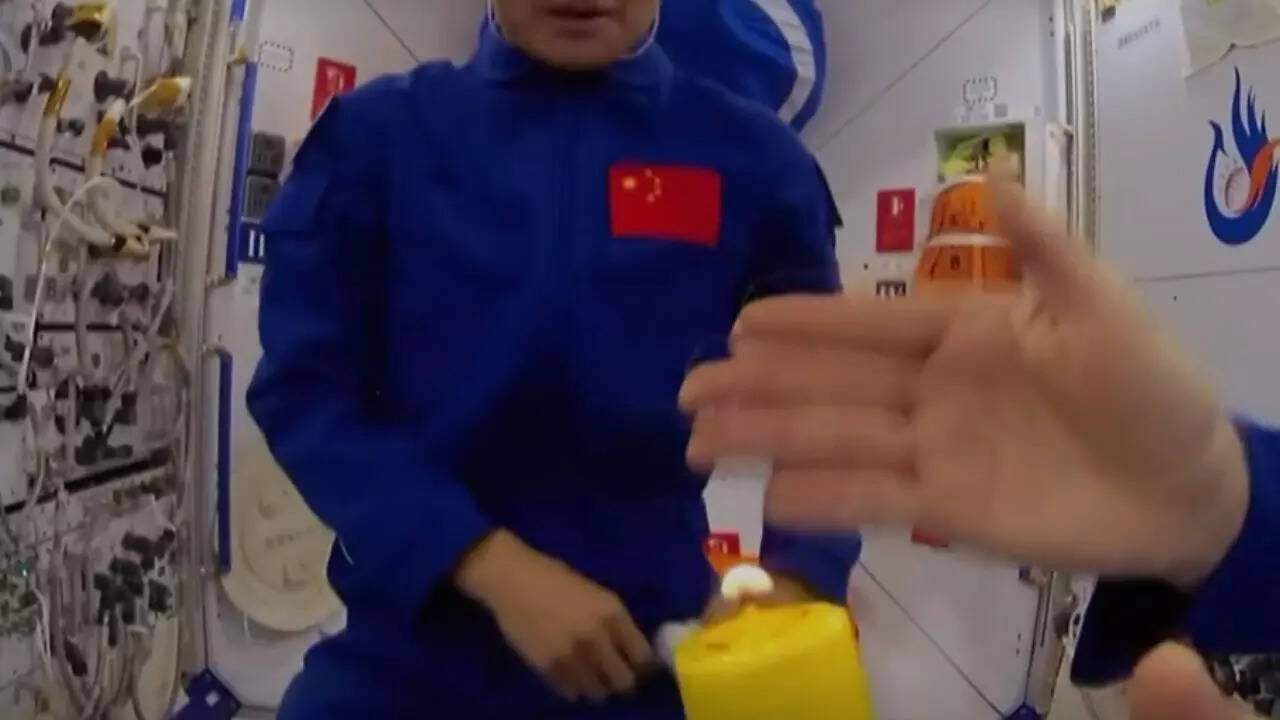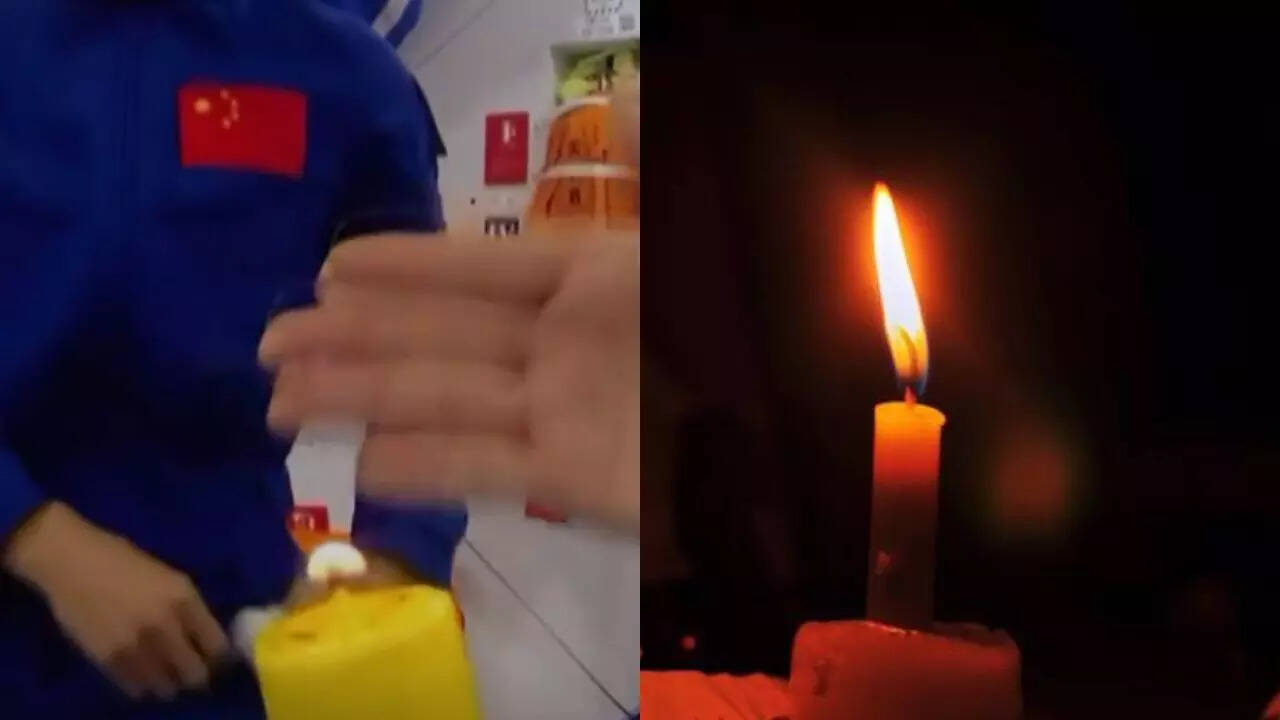ARTICLE AD BOX

Image credits: DAILYMOTION/Space.com
If space and its properties have your eyes shining with wonder, then this viral experiment conducted by Chinese astronauts in space is bound to enrich your minds with knowledge. Lighting a simple matchstick turned a live lesson into a striking discovery of physics in space, one that shocked everyone.
The viral video

Image credits: DAILYMOTION/Space.com
On China's Tiangong station, astronauts Gui Haichao and Zhu Yangzhu were broadcasting to classrooms across China, showing how a flame changes when gravity is no longer an acting force. The astronauts lit a matchstick to ignite a candle and the flame behaved surprisingly. Instead of its classic teardrop shape and dancing form it appeared in a stable and gentle form in an almost spherical shape.The quiet orb revealed how microgravity reshaped heat, air and combustion at their more basic level, giving an insight into unfamiliar physics.
Why did the flame look different in space?

Image credits: DAILYMOTION/Space.com, Getty Images
On Earth, a flame takes a teardrop shape because hot air rises and climbs, pulling oxygen from below and shaping the flame. This also leads to the yellow outer glow and a blue core along with its dancing form.In space, the convection is extremely muted. With a lack of buoyancy, gases don't divide into layers or currents, allowing the flame to spread equally and creating a round shape. Since oxygen is created by diffusion, the burning is gentle and calm, making the flame neat, last longer and blue in colour.
Also, helping us understand that heat, fire and smoke work differently in space. And in terms of space, it reveals how spacecraft handle air mixing, filtration and hazard response.What's interesting is that such an experiment could only be conducted aboard Tiangong. After a Russian Mir station caught fire in 1997, ISS created rare and strict protocols for open flames aboard. Today, most combustion research is done inside sealed, instrumented enclosures, with the help of fire-resistant materials and particular procedures.

 2 hours ago
4
2 hours ago
4









 English (US) ·
English (US) ·